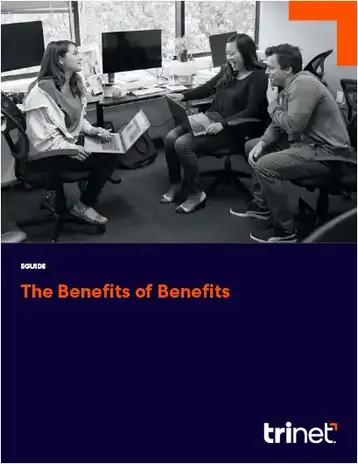
For many employers, a traditional cafeteria plan is another way to offer a voluntary benefit to employees. Despite the tax advantages, however, traditional cafeteria plans are subject to annual nondiscrimination testing — which can be a headache to administer and also be very costly. Due to this administrative burden, many small businesses have avoided offering these cafeteria plans. Fortunately, the United States Congress amended the Internal Revenue Code to allow small employers to establish simple cafeteria plans, which eliminate the nondiscrimination testing criteria so long as certain conditions are met. If you’re a small employer who currently provides benefits, or intend to do so, you should know about simple cafeteria plans. To understand simple cafeteria plans, you must first know the fundamentals of cafeteria plans in general.
What is a cafeteria plan?
A cafeteria plan is a documented plan that meets the requirements of Section 125 of the Internal Revenue Code. For this reason, cafeteria plans are also called “Section 125 plans.” Cafeteria plans enable employees to receive and pay for benefits on a pretax basis — meaning the benefit amount is withheld from the employee’s wages before taxes come out, thereby reducing the employee’s taxable wages and increasing their net pay. In most cases, cafeteria plan benefits are exempt from federal income tax, Social Security tax, Medicare tax, federal unemployment (FUTA) tax, and state income tax. Both the employee’s and the employer’s contributions are exempt from taxes that would have applied if the benefit had not been administered through a cafeteria plan.
The plan must offer employees a choice between at least one taxable benefit (e.g, cash) and one nontaxable benefit. If the plan provides only taxable benefits, then it is not a cafeteria plan. Typically, cafeteria plans offer considerably more nontaxable benefits than taxable benefits, as nontaxable benefits are the main selling points.
Benefits that a cafeteria plan can iclude:- Health insurance
- Dental insurance
- Vision insurance
- Health savings accounts
- Health flexible spending account
- Disability insurance
- Accidental death and dismemberment
- Dependent care assistance
- Life insurance
- 401(k) plans
- Adoption assistance
- Taxable benefits, such as cash
Certain benefits cannot be part of a cafeteria plan, such as educational assistance and de minimis fringe benefits. A key requirement of traditional cafeteria plans is that they must undergo annual nondiscrimination testing.
What is nondiscrimination testing?
The IRS requires cafeteria plan sponsors to perform nondiscrimination testing annually, to ensure the plan does not discriminate in favor of highly compensated employees (HCEs) and key employees, Nondiscrimination testing covers:
- Eligibility. The rules for participating in the plan must be the same for all employees.
- Benefits and contributions. The plan must treat HCEs and non-HCEs the same when it comes to benefit options and contributions.
- Key employee concentration test. Key employees cannot elect more than 25% of the total benefits provided under the plan. (A key employee is an officer or owner of the company, as defined by the IRS.) Small employers often have owner-employees, and tend to have trouble passing the key employee test.
A cafeteria plan is discriminatory if:
- A disproportionate number of non-HCEs are excluded from participating in the plan.
- HCEs or key employees receive greater access to benefits (or higher quality benefits) than non-HCEs or non-key employees under the plan.
- The total benefits elected by key employees exceed 25% of the total benefits available under the plan.
If the plan fails nondiscrimination testing, several consequences can ensue, including the key employee or HCE having to pay taxes on the benefits that failed the test — which would not have happened if the plan had passed. In addition, the employer may have to reissue Form W-2s, and may be subject to penalties and fines from the IRS. To spare small employers from nondiscrimination testing, and to encourage more small businesses to offer cafeteria plans, Congress amended IRC Section 125. This amendment — which took effect January 1, 2011 — permits small employers to adopt simple cafeteria plans.
What is a simple cafeteria plan?
A simple cafeteria plan is a cafeteria plan that enables employers with 100 or fewer employees to bypass annual nondiscrimination testing, if the following requirements are met:
- Employer size. You must have 100 or fewer employees during either of the 2 previous years. If your business was established in the current year, you can adopt a Simple cafeteria plan so long as you reasonably expect to hire at least 100 employees in the current year. Once the Simple cafeteria plan is established, you will remain eligible until you employ 200 or more employees. At the 200-employee mark, you’re no longer eligible.
- Employee eligibility and participation. Generally, all employees with at least 1,000 hours of service during the preceding plan year must be allowed to participate in the Simple cafeteria plan. Certain employees are excluded from this requirement, such as employees under the age of 21 or those with less than 1 year of service. All eligible employees must be permitted to elect any benefit provided under the plan; any limitations must apply to all participants.
- Employer contributions. You (the employer) must make contributions toward the benefits of each eligible employee who is not an HCE or key employee. Your contribution must be at least 2% of the employee’s compensation for the plan year, or 6% of the employee’s compensation for the plan year or twice the employee’s salary reductions — whichever is smaller. Separate rules apply to employer contributions for HCEs and key employees.
If all applicable rules are met, the simple cafeteria plan does not need to undergo nondiscrimination testing. This enables the employer to save on administrative costs (and bypass potential consequences) associated with annual nondiscrimination testing.
Administrative responsibilities
For more information on simple cafeteria plans, see IRC Section 125(j) and IRS Publication 15-B. Also, keep in mind that “simple” does not mean zero administrative responsibilities. As with traditional cafeteria plans, employers with a simple cafeteria plan must develop and maintain a written plan document, and follow the terms stated in the plan document. If you’d like to offer your small business employees a simple cafeteria plan, be sure to consult with a qualified employee benefits professional.
This communication is for informational purposes only; it is not legal, tax or accounting advice; and is not an offer to sell, buy or procure insurance.
This post may contain hyperlinks to websites operated by parties other than TriNet. Such hyperlinks are provided for reference only. TriNet does not control such web sites and is not responsible for their content. Inclusion of such hyperlinks on TriNet.com does not necessarily imply any endorsement of the material on such websites or association with their operators.






